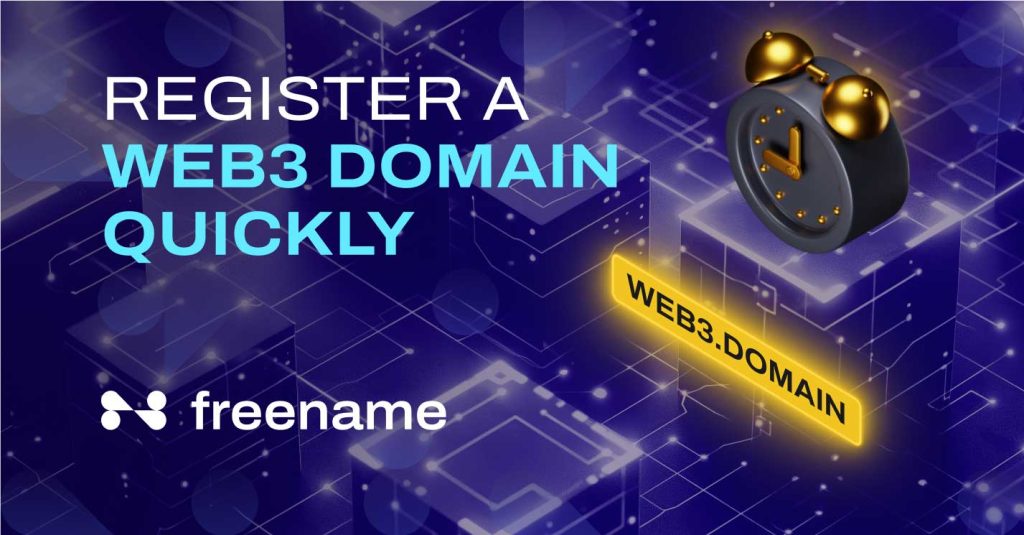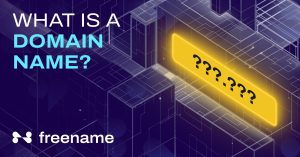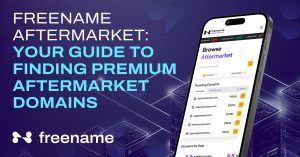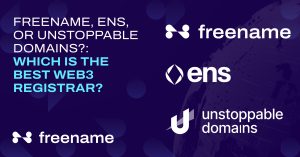The internet is evolving beyond Web3 into the next generation — Web4. While solutions like Web3 domains have revolutionized how we interact with the decentralized internet, Web4 promises to take this evolution several steps further.
As Freename continues to serve as a gateway to Web3 technology, understanding these upcoming changes becomes crucial for businesses and consumers. This article examines Web3’s decentralized foundation, compares Web3 vs Web4 capabilities, and explores how emerging technologies could transform our digital interactions.
Web3: The Decentralized Web
Web2 revolutionized online interaction through social media and digital services, but centralized platforms retain control over user data and digital assets. Web3 fundamentally transforms this model by leveraging blockchain technology to return ownership and control to users, creating a truly decentralized internet ecosystem.
The key features that define Web3 include:
- Decentralization: Web3 operates on distributed blockchain networks instead of centralized servers. Unlike platforms where companies maintain exclusive control, Web3 distributes authority across network participants through consensus mechanisms.
- Ownership: Web3 enables true digital ownership through blockchain technology. Users control their assets, identities, and data through cryptographic wallets rather than relying on corporate custody. This allows verifiable ownership of digital properties through tokenization like NFTs.
- Smart Contracts and DApps: Smart contracts are self-executing blockchain programs that automate transactions when conditions are met. DApps leverage these contracts to deliver familiar services — from finance to social media — through decentralized networks rather than corporate servers.
- Cryptocurrency: Cryptocurrencies enable secure, borderless transactions without banks. Through DeFi protocols, these digital currencies power an automated financial system offering lending, trading, and investment services.
In summary, Web3 combines decentralization, user ownership, smart contract functionality, and cryptocurrency to establish a new internet paradigm. The integration of these elements creates a more secure and equitable digital ecosystem.
Web4: The Next Step Beyond Web3

While Web3 brought us decentralization through blockchain technology, Web4 promises to create an internet that’s also intelligent, immersive, and seamlessly integrated into our daily lives.
Key features that will define Web4 include:
- Artificial Intelligence Integration: Web4 will incorporate advanced AI systems that understand context and user intent at an unprecedented level. These systems will deliver hyper-personalized experiences, automatically organize data, and generate intelligent content based on user needs.
- Immersive Experiences (XR): The future internet will break free from traditional screens by embracing extended reality technologies. Virtual and augmented reality will create three-dimensional, spatial web experiences that blur the line between digital and physical worlds.
- Hyperconnectivity: Web4 will integrate more profoundly with the Internet of Things (IoT) to create an environment where devices communicate seamlessly. Interconnected ecosystems enable smart cities, autonomous systems, and responsive digital environments that adapt to real-time user needs.
- Enhanced Privacy and Security: Building on Web3’s decentralized foundation, Web4 will implement advanced privacy solutions through zero-knowledge proofs and sophisticated cryptographic technologies.
- Autonomous Networks: AI and machine learning will enable networks to manage themselves. Like a self-maintaining city, these systems automatically fix problems, adjust to new demands, and optimize performance.
In summary, Web4 combines artificial intelligence, immersive technology, and advanced security to create an internet that’s not only decentralized, but intelligently responsive to human needs.
Web4 vs Web3: Key Differences
While Web3 revolutionized digital ownership through decentralization, Web4 will transform how we interact with the internet. Let’s examine the key differences between these technologies.
Technological Foundations
Web3 operates on blockchain technology and decentralized networks, revolutionizing how we handle digital assets. This infrastructure enables transparent peer-to-peer transactions, eliminates intermediaries, and gives users direct control over their digital property.
Web4 expands this foundation by integrating AI, quantum computing, and extended reality technologies. This evolution creates an infrastructure that’s not just decentralized, but also intelligent and responsive. Advanced processing capabilities enable complex interactions while maintaining the security and transparency established by Web3.
User Interaction
Web3 fundamentally changes how users engage with digital services by putting control in their hands. Through decentralized systems, users gain actual ownership of their digital assets and manage their own data.
Web4 enhances this control with AI-driven experiences and immersive technologies. Users will interact with digital content through natural interfaces and virtual environments while maintaining the sovereignty over their digital presence established in Web3.
Privacy and Security
Web3 established a new privacy paradigm through blockchain technology and decentralized systems. Users control their data through encrypted transactions, while transparent protocols ensure security without centralized oversight.
Web4 strengthens this foundation with quantum-safe cryptography and AI-powered security. As digital interactions become more complex through virtual environments and automated systems, these advanced protections ensure user data remains secure while enabling new features.
Integration of New Technologies
Web3 creates its foundation through blockchain and cryptocurrency, enabling secure transactions and decentralized applications. These technologies establish the basic framework for a user-controlled digital ecosystem.
Web4 expands this with quantum computing, advanced AI, and extended reality working in harmony. This integration enables sophisticated features like virtual worlds, intelligent automation, and seamless device connectivity while maintaining decentralized principles.

The Future of the Internet: Where We’re Heading
As Web4 approaches, Web3’s foundational technologies become increasingly vital. As a gateway to Web3, Freename is building crucial infrastructure bridging current decentralized systems with Web4’s intelligent, immersive future.
The evolution from Web3 to Web4 will integrate AI, extended reality, and quantum computing while maintaining decentralized principles. Through web3 payments and ai domains, users can already experience elements of this transition.
Understanding Web3 technologies through platforms like Freename is the first step for those preparing for this digital transformation. The combination of decentralized control and advanced technologies promises unprecedented opportunities for innovation in our digital future.
Web4 FAQs: Understanding the Next Internet Era
Does Web4 already exist?
No, Web4 is still an emerging concept. While some elements like AI integration and extended reality are developing, full Web4 implementation remains in the future.
What technologies will power Web4?
Web4 will rely on advanced AI systems, extended reality (AR/VR), Internet of Things (IoT), quantum computing, and enhanced cryptographic security — all built on Web3’s decentralized infrastructure.
Is Web4 secure?
Web4 builds on Web3’s inherent security with advanced cryptography and AI-powered protection.
How do Web3 domains prepare us for Web4?
Web3 domains establish the foundation for decentralized digital identity and ownership, essential elements that Web4 will build upon with AI and XR integration.







